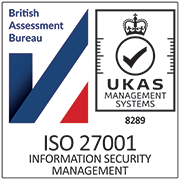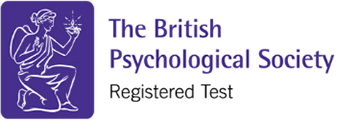What is Hogan?
The Hogan suite of psychometrics is very widely used in organisations across the world. The best-known tools in the Hogan portfolio are what Hogan call their ‘bright side’ profiler (Hogan Personality Indicator or HPI) and their ‘dark side’ profiler (Hogan Development Survey or HDS).
What makes the Hogan tools popular? Firstly, they are well researched. They have achieved the British Psychological Society test registration certification, which is fairly rare for a US company to try and attain. So, you can trust the tools to measure and predict accurately.
Secondly, they can be used in both recruitment and development contexts and work well in each.
In short, Hogan tools are usable, useful and it works. They go to some places that other tools and assessment companies haven’t or won’t.
When to Use Hogan? And what are the potential limitations?
Hogan delivers business-focused personality profiling and does it accurately and in a fairly user-friendly way. There are also quite a few reports available for most of their core tools. The breadth of report options is valuable because it allows the tools to be used in different contexts.
Hogan’s focus is on talent acquisition and development. It provides intuitive and data-based tools to screen candidates at high volumes and hand-select ideal candidates from a curated list. In talent development, it can be used in career, leadership, high-potential, and team development contexts.
The level of expertise needed for the Hogan tools is fairly high, because they’re well-researched, comprehensive and scientific in their approach. There aren’t any shortcuts with Hogan.
What is Strengthscope®?
Strengthscope® is a strengths-based assessment that identifies the unique strengths individual and teams, and how they can be applied to achieve peak performance. It is the only strengths assessment with BPS (British Psychological Society) registered test status, meaning it is scientifically validated and free from bias.
Strengthscope® helps individuals and teams:
- Identify their unique strengths and what energises them.
- Recognise overdrive risks, where strengths might become counterproductive under pressure.
- Develop strategies to optimise performance and engagement.
- Build resilience by understanding how to tap into strengths in different situations.
- Gather regular feedback on the visibility and effective use of their strengths.
- Measure factors that impact their leadership effectiveness and team effectiveness.
Strengthscope® highlights how each person is completely unique, helping them make conscious choices about how to apply their strengths at work.
How Do Hogan and Strengthscope® Work Together?
There are two ways to look at whether two psychometric tools can add value one to the other or whether they’re too similar to really be helpful. The first is statistically (scientifically) and the second is in practical terms.
When we took Strengthscope® through the British Psychological Society test registration process, we were keen to understand how Strengthscope® relates to HPI (the Hogan Personality Inventory) because our view was that the strengths approach and Strengthscope® are measuring something different from traditional approaches to measuring personality, of which HPI is one.
We were also keen to see how and whether our strengths in overdrive and/or drainers concepts were similar in practice to Hogan’s idea of personality derailers (from HDS, Hogan Development Survey) that can lead to unintended consequences. We were also interested to see results comparing Strengthscope® and HDS, the dark side profiler.
What we found was very reassuring. Strengthscope® evidently measures something different from, and more than, personality (as assessed by HPI). In fact, 10 of Strengthscope®’s 24 strengths didn’t relate at all to any of the personality factors in HPI and those that did were only modestly related.
On the relationship with HDS (the dark side derailer assessment), again statistical relationships with Strengthscope® strengths were modest. The other important thing that we found is that HDS doesn’t measure strengths in overdrive, probably because strengths is a positive psychology concept and HDS measures psychopathological tendencies – so they’re from very different worlds.
Using Strengthscope® and Hogan as a practitioner
Now onto the non-statistical way of looking at how two tools relate. The practical way. What we’ve found over around a decade of practice using various combinations of tools is that, in particular, Strengthscope® combined with HPI can really open up a great conversation around a person’s drivers, motives and energisers.
Even more helpfully, Strengthscope® combined with HDS can allow an easy entry point into quite sensitive discussions around someone’s derailers, even in high stakes environments like executive recruitment. When you start a conversation with strengths, you are affirming people for having qualities that drive value and which are important to them personally. Once you move from there into the overdrive risk conversation, with someone saying that ‘yes, they sometimes sense that their Enthusiasm can be overwhelming to others’ or that their ‘Detail orientation can be seen as pedantic and perfectionistic’, when you get into the more challenging conversation around HDS derailers, people are more willing to own those risks.
In summary, the combination of strengths to start, followed by HPI and/or HDS, we have found to be very powerful to get to a level of discussion and ownership for clients that we haven’t seen with other combinations.
Top 3 tips for choosing Hogan, Strengthscope® or a blended approach
- When your focus is simply to confirm someone’s personality preferences and associated behaviours without much around motivation or what drives behaviour, the Hogan Personality Inventory is a solid choice.
- When you want to understand what drives, energises and motivates people, and also where those energies may show up as risks, Strengthscope® can definitely be used alone as way of getting an understanding of more than just personality, but the drivers of personality.
- When you want to get to derailers, our recommendation is to start on a strengths footing, move to strengths in overdrive risks and drainer areas (where you don’t have a strength or energy for something) and then move to the Hogan Development Survey.












